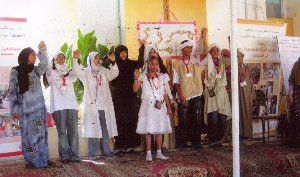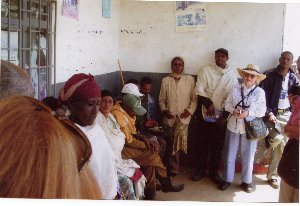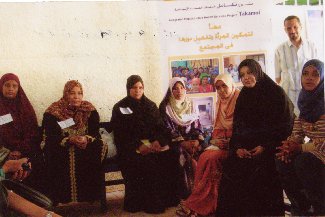Sally Epstein
My father understood that babies are healthier if spaced about 2½ years apart, and so in planning a second child he researched birth control methods. My younger brother Dick was 2½ years younger than I, and Walter 2½ years younger than Dick. Two more siblings, Judy and Bob, were similarly spaced. At least that is what we were told. My father saw that I was included in everything my brothers did: horseback riding, soccer, ice hockey, science kits, tennis, building castles on the beach with cement and stones, and sailing centerboard boats so we could learn to right them when they capsized. He even allowed me to take flying lessons as a college freshman, although he had nearly been killed in a plane crash while flying with a medical school classmate l a pilot, who was killed.
In the late 1920s, Margaret Sanger, the founder of Planned Parenthood, asked my father to test the shelf life of spermicidal jellies at his Philadelphia laboratory. This began a lifelong friendship and collaboration between them. I was intrigued by this feisty woman (with red hair, like me) who was willing to go to jail for her beliefs. At home there was much talk about birth control and its politics; I grew up believing that every child was wanted and planned. When I found out this was not true, I decided to help spread the message of family planning , so chose to become a social worker-rather than a doctor as my father wished. During World War II, I became a Nurse's Aide at Boston City Hospital. Because so many of the nurses had departed to join the military, I was given many of the tasks that nurses usually handled. My eyes were opened to the suffering of many women due to illness, poverty, brutality, and a lack of knowledge of their rights and options. I knew then that I was a feminist and would promote family planning-or birth control, as it was then known.
That year I met Fridel Smola of Austria, a mountain climber, who had trained American troops who would be fighting in the Alps . She was involved with The Experiment in International Living, a group founded by Donald Watt that worked to promote cross-cultural understanding and friendship by arranging student homestays abroad. During the summer of 1949 I lived with the Franz Kofflers, a doctor's family in Vienna (fortunately, I had taken German in high school). The horrors of war were brought home to me by the sight of bombed-out buildings, stories of near-starvation (including chewing on leather to lessen hunger pains), accounts of suffering at the hands of the Russians, and seeing the Koffler ancestral portraits, slashed by the stabs of Russian bayonets. After the summer program, I went mountain climbing with Fridel and our group leader Curt Geiger and was the first American woman to climb a difficult route up the Wartzman Mountain in Germany. Again I had the sense that women could choose challenges usually reserved for men. That fall (1949) I met and married Lionel Charles Epstein, a Harvard Law student who had been an Experiment leader to Holland. He'd written a senior paper on U.S. sterilization laws after consulting with my father, and was interested in my father's efforts to send women to Third World countries to help start family planning clinics with education programs and services. Lionel incorporated my father's Pathfinder Fund as an NGO in the District of Columbia. In 1952 Lionel and went to Holland as leaders of a high school group for an Experiment in International Living summer program. As we were about to sail on a student ship from New York City to Europe I discovered I was pregnant. Concerned, I consulted my father's friend Dr. Abraham Stone, who after examining me said I should simply check in with obstetricians as I traveled. After the summer program, we continued on to India to join my parents and Margaret Sanger for the first Asian International Planned Parenthood conference . We stayed on in India for family planning work; but later, with my mother I returned to Boston, where David was born on February 23, 1953-after his trip around the world.
In 1962 we were asked by Sargent Shriver (an Experimenter) to sail on student ships to ascertain whether students would consider spending two years as Peace Corps volunteers. Between sailings, we visited the families of the two Norwegian au pairs we had had for our children, as well as other Norwegian friends. We saw Munch prints and oils in their homes and in museums. *We soon started collecting, and our Epstein Family Collection grew to more than 300 prints and several oils. I volunteered with the local Washington area Planed Parenthood organization and for twelve years I assisted the Planned Parenthood worker at Washington City Hospital, advising women who had just given birth on the advantages of delaying future pregnancies and explaining different methods of birth control. Often I wore earrings I had made from Lippes Loops (IUDs); I will never forget the woman who, after my explanation, looked at me full of doubt: "Miss, I don't see how them things in your ears can keep you from getting knocked up!" Equally unforgettable was the woman who pointed to the loop inserter, saying, "I don't think that thing could fit inside me." When I started at the hospital, maternity patients filled four wards; beds were sometimes in the hall and patients were often sent to other hospitals. After family planning was introduced in District of Columbia public health clinics, knowledgeable patients stayed for sterilization and many, with our counseling, went home with birth control pills. At the end of 12 years, only one ward was filled with maternity patients and the District of Columbia now had the lowest urban birth rate in the country. Lionel and I divorced in the early 1980s. I continued my interest in family planning and traveled widely to observe progress overseas. As a result, I met Donald Collins, who had spent many years with organizations that funded grants for contraception work. In 1993 he invited me to join a group of family planning experts on a tour to Vietnam. A Vietnamese group had undertaken a clinical trial, using quinacrine (a drug most commonly used for malaria) as a method of sterilization for women. The quinacrine sterilization (QS) procedure* was being offered at government expense to women thirty years of age with two living children. Eleven to one, these women were choosing QS over surgical sterilization as an inexpensive, nonsurgical outpatient method. (Both methods were offered free by the Vietnamese government.) Unfortunately, political and religious forces in the World Health Organization forced the Vietnamese government to terminate this research, which had helped 50,000 women obtain QS with no reported deaths. The only potentially life-threatening complication was a rare allergic reaction. Don and I married not long after our return from the Vietnam study tour, and have spent the years since educating doctors about QS at international OB/GYN conferences and attempting to obtain US Food and Drug Administration approval so that we can distribute low-cost QS kits worldwide. We have been severely hampered by religious and political enemies, but we will not give up. We work through Don's NGO, International Services Assistance Fund (ISAF). When Don went to work in 1965 for a large Pittsburgh philanthropy, he was immediately put on the national board of the Planned Parenthood Federation of American (PPFA). He then was sent overseas to observe their programs in action; the sight of women dying from difficult pregnancies or botched and illegal abortions, or harried by bearing more children than they wished changed his professional life-from banking and then heading a venture capital firm, he directed his energy to starting or funding programs to study women's needs and help women obtain contraception. He was a founding member of IPAS (International Pregnancy Advisory Service), FHI (Family Health International), AGI (Alan Guttmacher Institute), Population Dynamics, Women's Health Services, and The Center for Population Options, and also helped with the funding for many similar organizations.  He started his own NGO, ISAF (International Services Assistance Fund), in 1976 and it is through this organization that he and I work to promote knowledge of QS and make plans to introduce it worldwide after its approval by the FDA.* Our website, www.isafonline.org, contains extensive information about QS and our work. While working to promote contraception, I learned about the impatience of feminist groups like the National Organization for Women, The Global Fund for Women, NARAL, Pro-Choice America, Emily's List, and Planned Parenthood Federation of America. I have contributed funds to these and other organizations, worked with their presidents, and participated in several marches. I have also served on the boards of Planned Parenthood of Metropolitan Washington, The Population Institute, Population Services International (PSI), the Federation for American Immigration Reform (FAIR), the Center for Development and Population Activities (CEDPA), and of course Pathfinder International. * Since 1957, Pathfinder International has maintained an unwavering belief in the right of women and families to have access to contraception and to quality reproductive health care. Pathfinder's founder Clarence Gamble, a pioneer in family planning and maternal health, introduced contraception to more than 60 developing countries, including some where Pathfinder is still engaged today. *We've given prints to the National Gallery in Washington; eventually the entire collection, plus about 90 interviews I have taped with Munch family, friends, neighbors, portrait subjects, etc., will go to the National Gallery. From the older Norwegians I learned a great deal about life and customs in Munch's era in the late 19th and early 20th century. Several catalogues with my introduction or essays have been published, and I continue to give tours and lectures when asked. * QS has already been used by more than 175,000 women worldwide with no reported deaths and only two cases of anaphylactic shock. We had trained doctors in 40 clinics for a Phase III clinical trial when a faulty rat study was used by the FDA to put a clinical hold on our program. We are now working to resolve this with studies that scientifically prove that quinacrine is not genotoxic in vivo, and that women who had QS before 1993 have no more cancer than a similar group that had IUDs or surgical sterilization. Back to VFA Fabulous Feminists |



